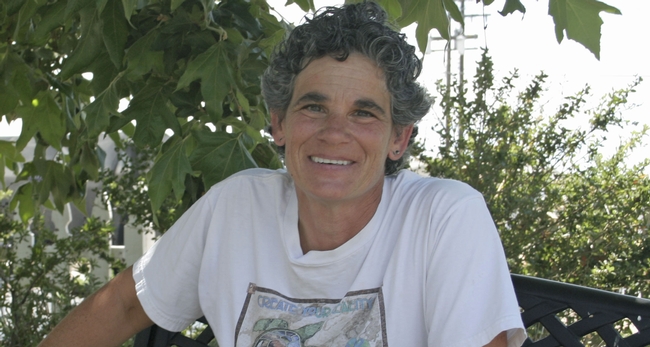Posts Tagged: Cheryl Wilen
Control garden weeds in early spring
Wilen recommends home gardeners use a swivel (or hula) hoe to scrape the surface and decapitate weeds. “It's a bit of exercise,” she said, "but you can do it so quickly, it's not a problem.”
Another weed control strategy is a thick layer of mulch, with does double-duty by reducing water evaporation from the soil surface, thereby conserving water. Wilen suggests a three- to four-inch layer of mulch be spread in garden beds and landscape borders before the weed seeds have a chance to germinate. Mulch blocks the sunlight weeds need to push through the ground.
Fabric weed barriers are useful for controlling particularly challenging weeds, like nutsedge. Wilen suggests covering the fabric with mulch for an esthetically pleasing weed-free garden.
Though the common herbicide glyphosate (such as Roundup) kills weeds and is safe if used correctly, Wilen prefers using the swivel hoe. "It's just quicker and easier than pulling out the spray equipment," she said.
Invasive weeds are taking a toll on wildflower displays
Sahara mustard, a resilient weed native to North Africa and the Mediterranean, is invading desert landscapes in the American Southwest, squeezing out beautiful wildflower displays that attract tourists and maintain the local ecology, reported the San Diego Union Tribune.
UC Cooperative Extension is testing methods of removing Sahara mustard, including hand weeding, hoes and herbicide. But these are only stopgap measures meant to keep the plant at bay in select spots.
“I don’t think we’re ever going to spray the herbicide across the entire Southwest,” said Chris McDonald, UCCE advisor in San Bernardino County. “But the idea is preserving areas of value, such as the wildflower fields of Borrego Springs.”
Sahara mustard has been in California since 1927, but it wasn't until Hurricane Kathleen doused California in 1976 that it proliferated widely, according to Rich Minnich, professor in the Department of Geography at UC Riverside.
“There was this gigantic explosion of mustard, and it’s never been the same since,” Minnich said.
Anza-Borrego's tough eradication project: Cutting the mustard
Louis Sahagun, Los Angeles Times
A front-page story in the Los Angeles Times detailed the changing attractions in Borrego Springs. Tourists used to come to see a colorful display of wildflowers, but because of an invasive weed, Sahara mustard, local officials are now trying to turn visitors attention to hiking, cycling, star gazing and photography instead. UCCE's Chris McDonald, who is conducting research on Sahara mustard control, was featured in four of the nine photos that accompanied the story.
Nutgrass: Three experts' solutions to one of the worst weeds
L.A. at Home blog, Los Angeles Times
Nutsedge is commonly considered a gardeners' worst enemy, which is further proven by the draconian measures to control the weed offered by UC and other experts in the L.A. at Home blog this week. In the introduction to the problem, Cheryl Wilen, UC Cooperative Extension advisor, notes there are two kinds of nutsedge. One way to tell them apart takes a little courage.
"If you are inclined to bite into one," she said, "yellow nutsedge has a pleasant almond or brazilnut taste, while purple nutsedge does not have a good flavor."
Controlling either kind is challenging. Yvonne Savio, UCCE manager of the L.A. County common ground program, suggests extricating the weed in a way that may seem extreme.
Dig 6 inches around and under each weed and throw the weed and dug up soil into the garbage. "Don't even think of composting the weed or filtering the soil through a screen," Savio said. The weeds will come back.



